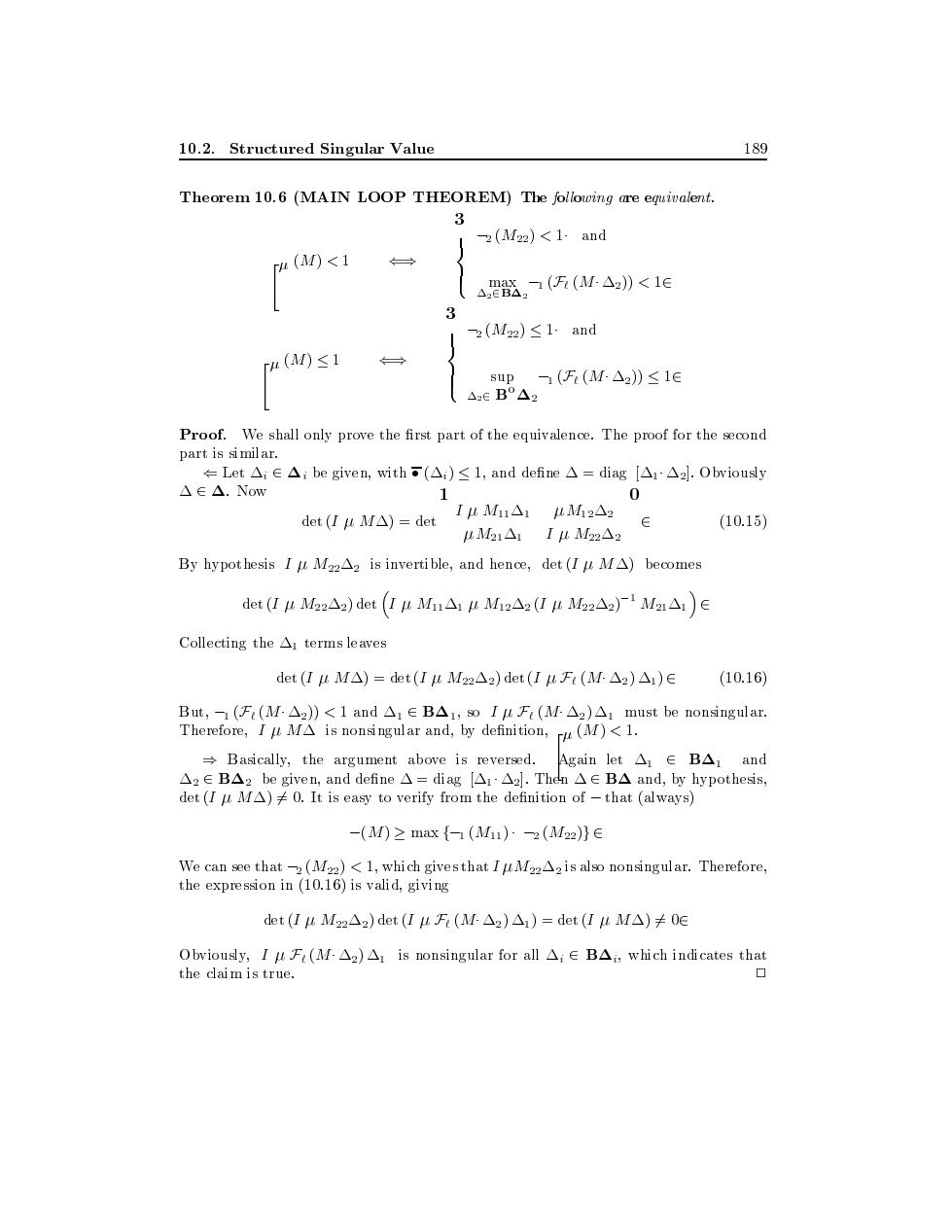正在加载图片...

10.2.Structured Singular Value 189 Theorem 10.6(MAIN LOOP THEOREM)The following are equivalent. 3 2(M22)<1.and u(M)<1 ←→ △87(Fi(MA2)<1e 3 -2(M22)≤1.and ru(M)≤1 sup (F(M△2)≤1∈ △2∈B°△2 Proof.We shall only prove the first part of the equivalence.The proof for the second part is similar. ←Let△i∈△;be given,with(△i)≤l,and define△=diag[△△zl.Obviously △∈△.Now 1 0 det (IM)=detE (10.15) HM21△1I4M22△2 By hypot hesis I u M22A2 is invertible,and hence,det(I u MA)becomes det(IHM2z△2)det(IhM1△1hM2△2(IhM2△2)-1M2△1)∈ Collecting the Ai terms leaves det(IuM△)=det(IuM22△2)det(IuF(M△2)△)∈ (10.16) But,-1(F(M△2)<1and△1∈BA1,so IuF(M-△2)△1 must be nonsingular.. Therefore,ILMA is nonsingular and,by definition,(M)<1. Basically,the argument above is reversed. Again let△1∈B△1and △2∈B△2 be given,and define△=diag[△△l.Thh△∈B△and,by hypothesis, det(I u MA)0.It is easy to verify from the definition of-that (always) -(M)≥max{-(M1)-2(M22)}∈ We can see that2(M22)<1,which givesthat IuM22A2is also nonsingular.Therefore, the expression in (10.16)is valid,giving det(IhM22△2)det(IhF(M△2)△,)=det(IuM△)≠0e Obviously,IhF(M△2)△1 is nonsingular for all△;∈B△i,which indicates that the claim is true. Structured Singular Value Theorem MAIN LOOP THEOREM
The fol lowing are equivalent M M and max B F M M M and sup Bo F M Proof We shall only prove the rst part of the equivalence The proof for the second part is similar Let i i be given with i and dene diag Obviously Now det I M det I M M M I M By hypothesis I M is invertible and hence det I M becomes det I M det I M M I M M Collecting the terms leaves det I M det I M det I F M
But F M and B so I F M must be nonsingular Therefore I M is nonsingular and by denition M Basically the argument above is reversed Again let B and B be given and dene diag Then B and by hypothesis det I M It is easy to verify from the denition of that always M max f M Mg We can see that M which gives that IM is also nonsingular Therefore the expression in
is valid giving det I M det I F M det I M Obviously I F M is nonsingular for all i Bi which indicates that the claim is true ��������������������������������������������������������������������������������������������������